3d Art Projects 3d Art That Tricks the Eye
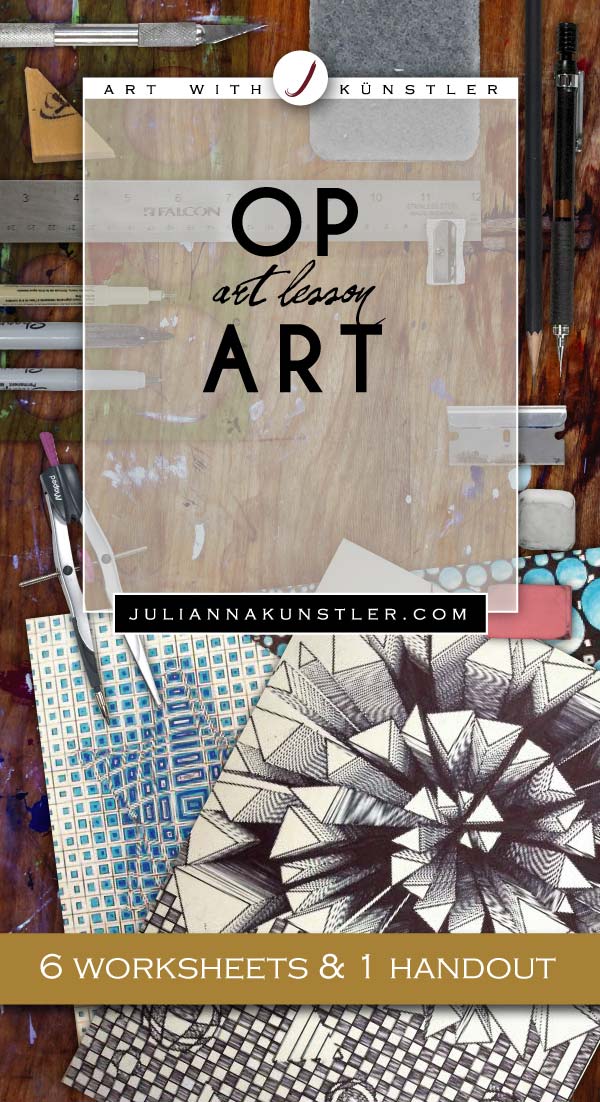
OpArt Design
Create a design using only elementary shapes, lines, or grids.
Dispense the patterns to create an illusion of a 3D space
Learning objectives:
- Place Optical Illusions artwork and artists
- Understand science behind OpArt
- Manipulate space and shapes to create an illusion of depth
- Linear perspective (advanced)
- Patterns and repetition
some history

Op-art, also known every bit optical art, is used to describe some paintings and other works of art which utilize optical illusions.
Op art works are abstract, with many of the ameliorate known pieces made in only black and white. When the viewer looks at them, the impression is given of movement, hidden images, flashing and vibration, patterns, or alternatively, of swelling or warping.
A true Op Art piece "teases" the eye. Straight lines may appear curved, lines wriggle, flat areas undulate. The eye is tricked into seeing things which are not so. Areas may appear to be flattened or stretched. The eye may ofttimes be unable to focus when viewing an Op Fine art slice.
In the mid-20th century, artists such as Victor Vasarely, Bridget Riley and Thousand.C. Escher experimented with Optical Art. Escher's piece of work, although not abstract, deals extensively with various forms of visual tricks and paradoxes.
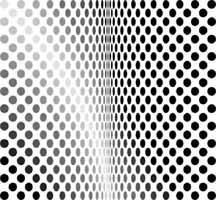

practice first
Utilise a ruler and a pencil/pen.
worksheets 1 & two


Refresh your Linear Perspective skills.

1. Utilise existing Horizon line and a Vanishing point to draw railroad tracks.


2. Utilise the aforementioned Linear Perspective approach to create an illusion of a bended surface


Pay attending to how y'all can utilize grid in one-indicate perspective to make the surface flat, folded, or rippled.


3. In worksheet 2:

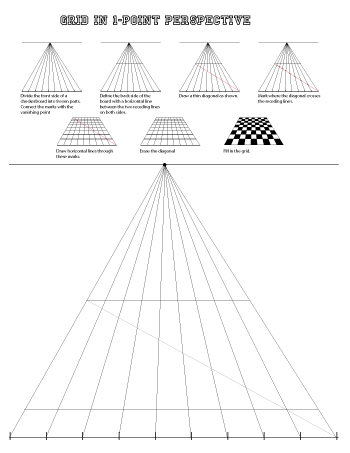
Follow the directions to create a grid in i point perspective.
You are at present done with worksheets 1 and 2.
worksheets three & four


Create an illusion of depth with lines.
On worksheet 3:
Practice drawing directly receding lines. Starting time at the edge, then draw a thin solid line to the vanishing betoken.
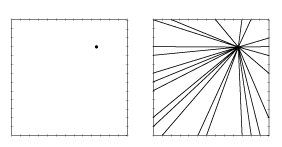
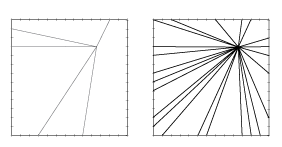
Use the same approach to depict "tiled" designs. You can exercise cartoon "free-mitt".
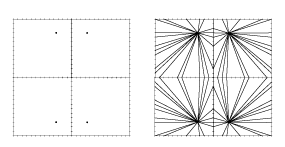
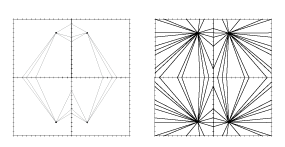

On worksheet 4:
4. Carefully draw a "tiled" design that y'all but proficient.
Use a ruler!!!
On worksheet 3:
Practise drawing "folded" lines.
You can practice free-hand.
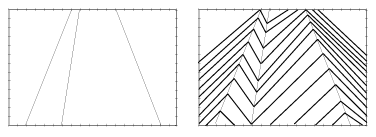
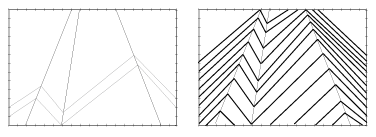
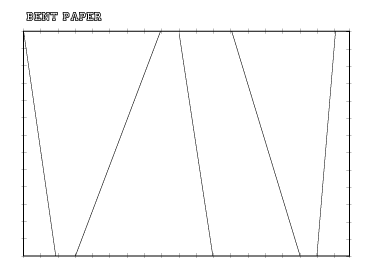
On worksheet 4:
v. Carefully draw a "bent" linear design that yous merely practiced.
Use a ruler!!!
On worksheet three:
Encounter how you can use directly lines and circles and create a 3D illusion just past spacing them differently.
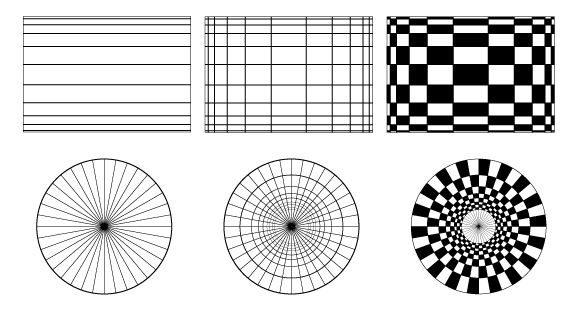
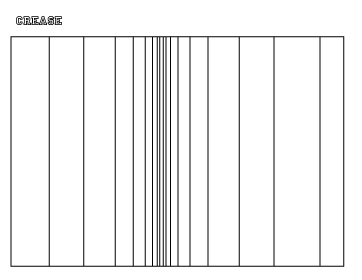
On worksheet iv:
vi. Complete the design to support the illusion by:
- adding horizontal lines /curves to the filigree, or
- by changing the line thickness, or
- by filling in the stripes
Use a ruler or gratuitous-hand!!!

On worksheet iv:
7. Complete the design to back up the illusion by adding circles.
Use compass or free-hand.
worksheets 5 & 6


Distortions.
On worksheet 5:
Exercise drawing curved lines to create a unique 3-D illusion.

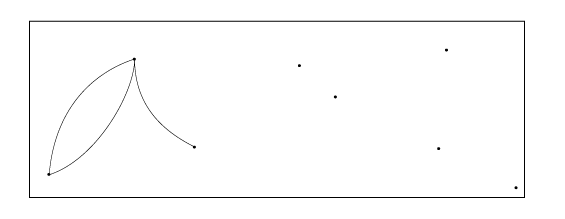
On worksheet vi:
8. Complete the blueprint with bend distortions that you lot simply practiced.
Free-manus.
On worksheet five:
Practise drawing the popping brawl. Delight follow the instructions on the handout!
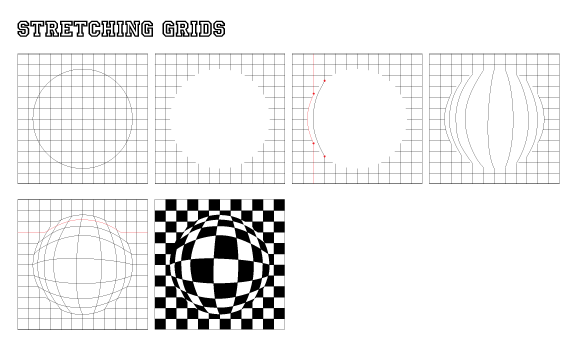

On worksheet vi:
9. Complete the design.
Free-paw.
Assignment steps:
Using only patterns or basic shapes - create a blueprint with a three-D quality or an optical illusion.
Start with sketching!
Experiment with perspective; apply grids, shapes, and lines to create patterns and illusions.
- Your piece should be designed in black & white
- Your slice should fit this description to truly be an Op Art piece… If it doesn't, so it is only a blueprint. You lot are not but creating a design!!!!!
"But Designs" receive an "F" !!!! - Sketch at least 4 different ideas.
- If you have a difficult time starting the sketches - here is an instance of how you can start.
Measurement, carefulness, neatness, beingness precise are all necessary for a successful Op Art slice. Y'all volition be graded on these, and your overall image.
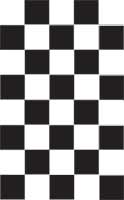
If you have a hard time starting the sketches - here is an instance of how you can commencement.
Start with a grid...
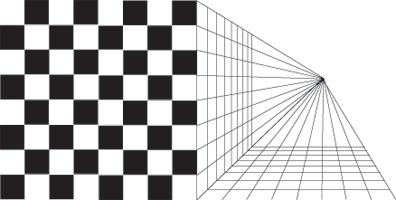
Add together perspective to one side (or a few), and then kickoff edifice the illusion of a 3-D.
Please, don't submit this idea equally your sketch - utilize it as a starting point.
Choose the best idea for the execution. Yous might even want to combine a few of your ideas into the final design.
Delight submit you sketch to me prior to starting your design on a large scale!
requirements
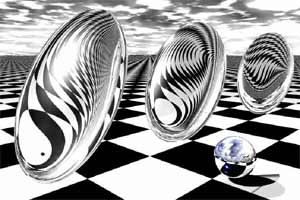
- Utilize some form of perspective.
- Design should be complex and creative.
- Use Black Sharpie to outline the design when it is done. See me if yous want to introduce an boosted color.
- Erase all pencil marks.
- Apply a ruler, compass, stencils, etc. to build your Op Art blueprint.
Think, yous will be graded on neatness and preciseness!!!
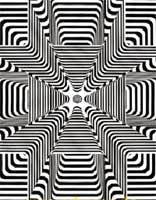
Think:
yous can use multiple vanishing points; y'all tin combine grids, shapes, and lines in your piece of work; yous tin use ideas from the worksheets that you've done.
measurements and neatness

- Measurement, exactness, neatness, being precise are all necessary for a successful Op Art slice. Yous will exist graded on these, and your overall image. So use a ruler, compass, stencils, etc. to build your Op Fine art blueprint.
- Apply very fine pencil lines during the design construction.
Source: https://juliannakunstler.com/art2_opart.html
Post a Comment for "3d Art Projects 3d Art That Tricks the Eye"